Selecting the perfect metal for your diamond jewelry is a crucial decision that can greatly influence the overall look and characteristics of your ring. With a wide array of options available, it’s important to understand how different metals interact with diamonds, affecting their color and overall appearance.
In this article, we will explore how various metals interact with diamonds and discuss the impact they have on the brightness and darkness of the stone. Whether you’re curious about which metal to choose for your diamond jewelry or simply seeking guidance, we’ve got you covered. So, continue reading to find out which metal will best complement your diamond.
DESIGN YOUR OWN ENGAGEMENT RING: START WITH A SETTING OR START WITH A DIAMOND. IT’S REALLY UP TO YOU!
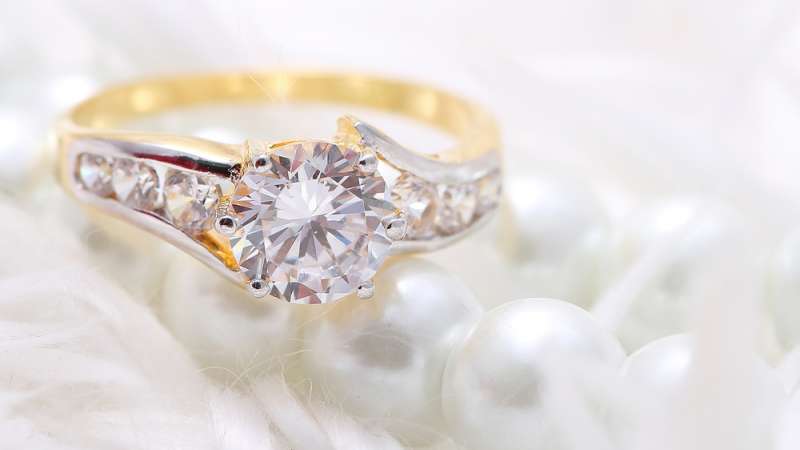
How Do Precious Metals Alter the Appearance of Diamonds?
Have you ever wondered why the choice of precious metal can impact the appearance of a diamond? It all comes down to the way light interacts with the stone. Diamonds are masterfully cut to reflect and refract light, creating their mesmerizing sparkle.
However, diamonds don’t just reflect light; they also reflect their surroundings. This applies to diamonds of all shapes, sizes, and carat weights. As a result, the color of the setting in which a diamond is placed can influence its overall appearance. The most commonly used precious metals for engagement ring settings are white gold, yellow gold, rose gold, and platinum. In the following sections, we will delve into each of these metals and explore how they can impact the reflection and beauty of your diamond.
While many people choose their engagement ring’s precious metal based on personal preference and aesthetics, it’s important to consider how the chosen metal will interact with and enhance the brilliance of your diamond. By understanding these dynamics, you can make an informed decision and create a stunning combination of diamond and metal in your engagement ring.
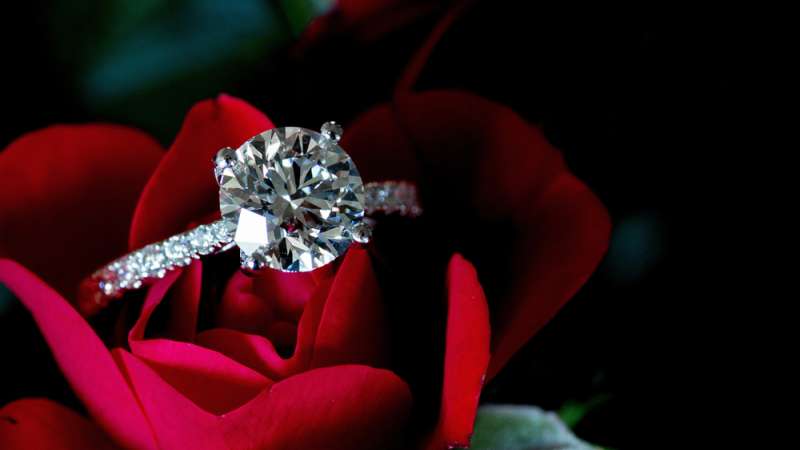
What To Consider When Choosing A Precious Metal For Diamond Jewelry
When choosing the perfect metal for your diamond jewelry, there are several factors to consider. Let’s explore them further:
- Consider Your Partner’s Preference: Take a peek into your partner’s jewelry collection to get an idea of their metal color preference. Matching the metal with their skin tone can also enhance the overall look. If your partner has a penchant for unique styles, you can explore mixed metal options or combine a diamond with a contrasting metal ring.
- Reflect on Style and Jewelry Preference: Platinum or white gold are ideal for those who prefer cooler tones and silver-toned jewelry. If your partner gravitates towards warmer tones, yellow gold or rose gold are excellent choices. Combining metals like white gold and yellow gold can complement their existing jewelry collection.
- Highlight the Diamond’s Brilliance: A white metal head, such as platinum or white gold, will enhance the diamond’s brightness and create a dazzling effect. These metals allow the diamond to shine without overpowering its color. For a more traditional look, yellow gold is a popular choice, especially for solitaires and unique-shaped gems. If you want a metal that stands out on its own, consider rose or black gold.
- Consider the Price: The type of metal you choose will affect the overall cost of the ring. Platinum is the most expensive option due to its rarity and durability. Gold is a popular and more affordable choice, with prices ranging from 25 to 60% less than platinum for similar styles. Palladium is a budget-friendly alternative that offers a similar appearance to platinum. Silver is the most cost-effective option but requires regular maintenance to prevent tarnishing. Tungsten and titanium are durable and low-cost alternatives to silver.
- Harmonize with the Setting Design: The metal you choose should complement the shape and style of both the diamond and the setting. Platinum or white gold are often preferred for a sophisticated and dazzling princess-cut diamond, while yellow gold adds a touch of retro elegance. Rose gold pairs well with intricate embellishments, and palladium provides a reflective surface for a prominent center stone. Consider the overall aesthetic you want to achieve and how the metal will harmonize with other elements of the ring.
- Diamond Shape and Color Display: The shape of the diamond can influence how the colored metal reflects into the stone. Round brilliant diamonds show the least amount of body color, while emerald and Asscher cut diamonds tend to display color more prominently. Oval, marquise, and pear cut diamonds are more likely to show off their color, so it’s advisable to select a higher color grade for these shapes.
By considering these aspects, you can choose the perfect metal that enhances the beauty of your diamond and complements your partner’s style and preferences. Happy diamond shopping!
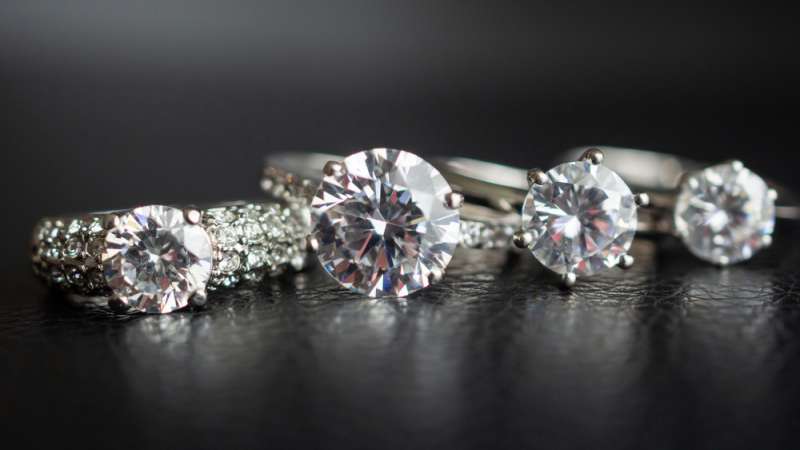
Types Of Precious Metals: Metals That Enhance a Gem’s Beauty
Gold
Gold is widely favored for jewelry due to its exceptional malleability. Pure yellow gold, known as 24-Karat gold, has a rich and warm tone but is too soft for jewelry. To strengthen gold, it is alloyed with metals like silver, nickel, and zinc, which also affect its color. Jewelry is typically made from 18-Karat, 14-Karat, or 10-Karat gold, with the Karat indicating the purity of gold in the alloy. Lower Karat gold, like 10-Karat, has a lighter and cooler tone, while higher Karat gold, like 18-Karat, has a warmer and richer tone.
Yellow Gold
Yellow gold is a classic choice with warm undertones, achieved by blending gold with copper. It is popular for traditional solitaires and designs with a softer, natural appearance.
Rose Gold
Rose gold offers a warmer and more romantic aesthetic. It is created by combining yellow gold with a copper alloy, making it an excellent choice for individuals with pink undertones.
White Gold
White gold features a delicate, silvery tone and gained popularity in 1917. By combining yellow gold with copper, zinc, and nickel, it achieves a yellowish-white tint. Jewelers often coat white gold with rhodium, a platinum group metal, to give it a bright white appearance similar to platinum. Over time, the coating may wear away, requiring re-plating to maintain its white hue.
Platinum
Platinum is a naturally white and durable metal that became commercially available around 1900. It has a beautiful cool shine that enhances the brilliance of white diamonds. Platinum is renowned for its longevity and strength, making it suitable for active lifestyles. Additionally, it is hypoallergenic, as it doesn’t require mixing with nickel.
Palladium
Palladium offers a white tint and a glossy finish reminiscent of platinum. While not as durable, it is still suitable for individuals with active lifestyles who desire a mirror-like sheen. Palladium is lightweight, easy to wear, and hypoallergenic. However, it can show scratches and is challenging to resize.
Sterling Silver
Sterling silver is an affordable option and has a moon-like white tint. It is a stronger alternative to pure silver, which is too soft for jewelry. However, sterling silver requires regular polishing and cleaning to maintain its luster. It is susceptible to tarnishing and should be stored properly to prevent damage.
Titanium
Titanium, initially used for industrial purposes, has gained popularity for men’s rings. It is highly durable, lightweight, and scratch-resistant. Titanium has a modern and distinctive appearance and requires minimal maintenance. However, it cannot be resized.
Tungsten
Tungsten is an exceptionally strong and scratch-resistant metal, four times stronger than titanium. It is an affordable option that requires minimal maintenance. However, tungsten rings cannot be resized, and they can be brittle and prone to breaking if dropped or subjected to significant force.
Consider these different metals when selecting the ideal material for your jewelry, taking into account their characteristics, durability, and maintenance requirements.
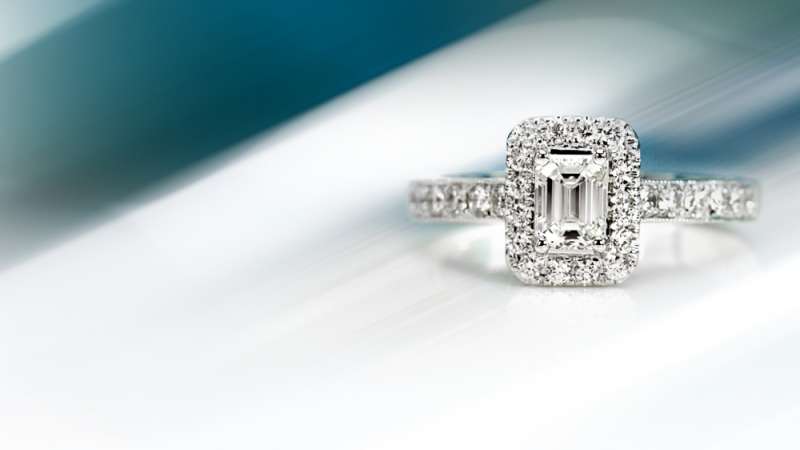
Pairing Precious Metals With Diamonds
D to F Color Diamonds
According to experts, such as the gemologists at the GIA (Gemological Institute of America), colorless diamonds in the D to F range are best set in platinum or white gold. When set in yellow or rose gold, these diamonds may reflect some of the color of the setting, giving them a slightly yellow appearance.
G to J Color Diamonds
Diamonds with color grades ranging from G to J may have a very subtle yellow tint that is often not noticeable to most people. To enhance the diamond’s whiteness, experts recommend setting it in white gold or platinum, as these metals minimize any yellow hues. However, it is possible to choose a yellow or rose gold setting, but be aware that these warmer tones might make the diamond appear lower in color than its actual grading.
K to Z Color Diamonds
Diamonds with color grades of K to Z will exhibit a visible yellow color. In such cases, qualified gemologists and jewelers often suggest a yellow gold setting, as it creates a balanced look with the diamond’s yellow hue. Rose gold, with its warm golden tones, can also be a suitable option for these diamonds.
If desired, it is still possible to use a white gold or platinum setting with a K to Z color diamond. However, it’s important to note that the contrasting tone of these bright white metals may accentuate the diamond’s subtle yellow tinge.
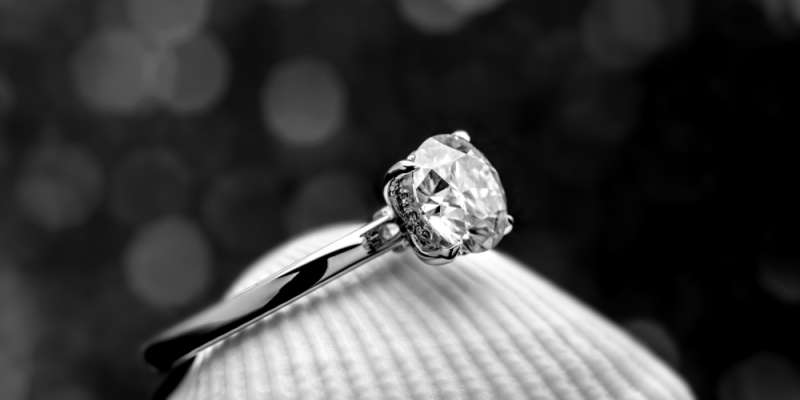
How To Maintain Your Jewelry With Precious Metals
Here are some general maintenance guidelines that apply to any type of metal you choose:
- Soften any buildup on your ring by soaking it overnight in a solution of white vinegar or water with a small amount of dish soap.
- Gently scrub the top and underside of the band using a baby toothbrush to remove any remaining residue.
- Use a jewelry cleaning cloth regularly to prevent your rings from losing their shine and becoming dull.
- Remove your ring before using strong chemicals or going swimming to avoid potential damage.
- Take off your jewelry before engaging in activities such as working out at the gym, gardening, or any other tasks that may pose a risk to your ring.
- Exercise extra caution if your ring features pavé stones or delicate settings to prevent any damage or loss of stones.
- Schedule an annual check-up for your ring, regardless of the metal or style. This ensures that any potential issues can be addressed early on and helps maintain the overall condition of your ring.
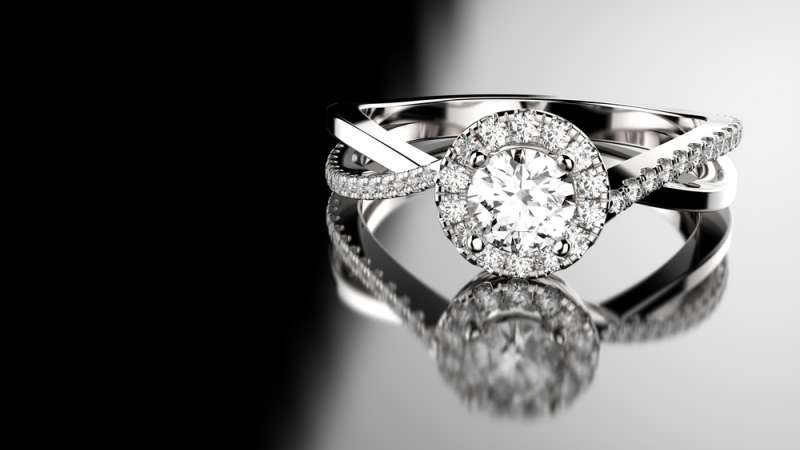
Final Word
Selecting the right metal for your jewelry is a relatively simple process once you grasp the fundamentals of precious metals. Whether you opt for white gold, yellow gold, or platinum largely comes down to personal preference, but it’s also important to consider the financial aspect.
Ultimately, it’s essential to carefully evaluate the pros and cons of various metal options before making a final decision on your jewelry. We wish you the best in your selection process!


